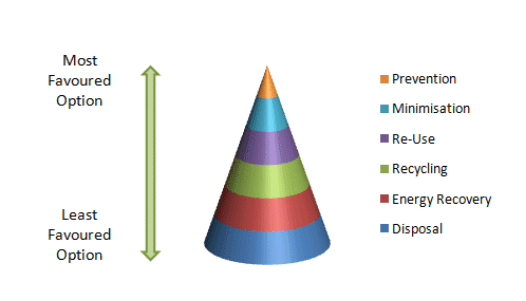Introduction
Management of physical product and the flow of information that goes along with the product, be in a proper supply chain will result in the highest level of customer satisfaction at low cost (Tayur, Ganeshan and Magazine, 2012). Supply chain management is the control of the supply chain and it is a process from supplier to manufacturer, then from wholesaler to retailer and at last to customers. In normal word, supply chain management is a management of goods and services (Fawcett, Ellram and Ogden, 2014). This project is based on the case study of Nike and an analysis of the supply chain management approaches of this cited company. By using AAA model, evaluation is done on the performance of the business in its efforts for sustainability. Different measures are taken to reduce waste and increase recycle ability in supply chain. Analyzing of Nike approaches to setting up supply chain and their structure and the strategies to achieve competitive advantages are covered in this project.
Overview of Nike
Nike is an American multinational corporation that involved in designing, manufacturing, and sales of footwear. It is one of the largest supplier of the athletic shoes and manufacturing of the sport equipment in the world. The company was founded on January 25, 1964 and is headquartered in the Portland metropolitan area. The role of the SCM in Nike is that it improves the profit margins, reduces the inventories and it also helps in ensuring that the customer receives right product on right time (Soni, 2014). From SCM, the cited company's manufacturing network consists of over 700 factories in 42 countries. From 57 distribution centers, each product of Nike moves to 18500 accounts and 140000 retail shops across the world. In term of footwear manufacturers, mentioned company in 2014, supplied 150 footwear factories in 14 countries. Now Nike has a license agreement which gives permission to the third parties to manufacture and sell digital devices and applications and other equipment designed for sport related activities by using Nike owned trademarks (Porteous and Rammohan, 2013).
1) Evaluating Nike has performed in its efforts for sustainability by using AAA model.
The AAA sustainable quality program was launched with a motive to help the company by providing the best quality products to the consumers (Monczka and et.al., 2015). It also secures the livelihoods of those employees who produces shoes. Nike adopted three generic approaches to create the value across the world. The AAA denotes adaptation, Aggregation and Arbitrage strategies.
Adaptation strategies is used to increase the revenue and the market share of Nike, which can be done by producing those products which suits the requirement and preferences of the customers. It is the most widely used global strategies (Hugos, 2011). Later, Nike focused on Sport shoes, by using this business strategy now they also focused on formal shoes and equipment for sports activity as it suits the preference of the consumers. Therefore, some degree of adaptation is necessary or essential for almost all the products all over the world. The another type of adaptation strategies focuses on a specific product, geographies or market segments. These have an advantage that wide difference can exist within broad product and they can compete effectively in the local markets (Ross, 2013). Nike adopted this strategies by focuses on a specific product and produces varieties of that product. The another adaptation is to focus on design and reduce the cost of that product. The mentioned company introduced formal shoes at an affordable price to significant number of citizens. For example if Nike is expanding its business in other countries, for this they have to change their strategies according to the countries, they can't go with the strategies which are adopted in their home countries. Different countries have different supply chain management and strategies.
The another strategy is Aggregation which is about creating economics of scale and scope into the global business (Wisner, Tan and Leong, 2015). The objective of the strategies is to exploit the similarities among geographies. With the help of this strategy, Nike can identify the ways of introducing economies of scale. It can be done by reducing the price of the products against the competitor's product. It can be done by reducing the cost of expenses and the wastage of the materials, by reducing this it helps the company in reducing the cost of the product and also helps in maintaining the customers. With the help of the supply chain management it helps the company in managing the goods and services at a lower rate so that it attract the people and from the sale of the product will increase. Aggregation not only focus on the cost but also focus on the geographic. To create a substantial cost advantage, they have to centralized their purchasing firstly in regionally and then globally (Dekker and et.al., 2013).
Nike produces different variety of shoes and have a market presence in every major country in the world and ranks among the world's most valuable brands. For the growth and highly competitive they began a series of acquisitions that give the Nike the scale and the resources to participate in global market. By this, the company establish new relationship with rate sustainability (Blanchard, 2010). It also helped to promote the integration of sustainability within the organization. The AAA program is launched to support the employees by providing training and technical assistance to them with a motive to improve sustainability and productivity of the company by maintaining the highest quality. Millions of customers in countries. Nike's global initiative focused on establishing its business in different countries. With the help of proper supply chain it helps the company to expand its business in different countries.
The third generic strategy adopted by the Nike for sustainability is Arbitrage. This is a strategy of exploiting differences, rather than bridging them. It means buy at a lower rate and sell at higher price. With a proper supply chain management, Nike can buy material which are used for producing products at a lower rate, so that the expenses for production will not increase and then sell the product at a higher rate, with this Nike will increase the profits (Coyle and et.al., 2012). Through the globalization of supply chain has happened, the risk and challenges also emerged.
By rewiring of Nike's approaches for sustainability of supply chain brings changes to the company level and also with its suppliers. The globalization is affected by managing the AAA model, Nike changed its business to better integrate sustainability. It also helped to promote the integration of sustainability within the organization (Waters and Rinsler, 2014). The AAA program is launched to support the employees by providing training and technical assistance to them with a motive to improve sustainability and productivity of the company by maintaining the highest quality.
2) Reducing waste and increasing recyclability
Waste is the residual outcome that occurs at every next step of supply chain. Reducing waste and increasing use of recycle products in supply chain will help Nike to cut short its overall cost. It is the material which is obtained anywhere in the supply chain that do not reach to the final consumer (Carter, and Easton, 2011). Nike can involve in the measure by which it can reduce its waste materials by increasing the use of recycling. There are ways which can be used by the company to initiate the same. Some of the ways to reduce waste and increase recyclability are discussed further:
Waste management hierarchy: This is the process which will help Nike to protect the environment and also examine the energy and resources consumption to the least to most favourable actions as shown in the figure below. Hierarchy concerns with “3 R's” strategy, where 'R' refers to reduce, reuse and recycle of waste material of Nike's supply chain (Sarkis and Lai, 2011). This model targets at maximising the utilisation of material into product's manufacturing and minimising the use of waste material. It will even initiate Nike to form an Eco-friendly environment. Retailer can also increase the use of recycled products which will increase the productivity and profitability of the company and the retailers (What is the Waste Management Hierarchy?, 2016).

(Sources: What is the Waste Management Hierarchy?, 2016)
Selling out outdated products at discount: Retailer of Nike can sell their outdated products at a discounted rate so that they can sell out the maximum products and can also minimise their waste (Gold, Seuring and Beske, 2010). Furthermore, the company can donate and do charity of old stuff which will upgrade the brand image. This way of reducing waste will have positive impact on reducing the dead stock of the company.
Avoiding excess stock: Retailers maintain sales record by which they can avoid excess orders of the products which will reduce excessive storage of material. This will also help the retailers to upgrade themselves with updated stock. Retailers should entertain Just-In-Time (JIT) delivery which will ensure them in minimising the stock quantity (Sarkis, Zhu and Lai, 2011). Retailers can send back the damaged and unsold stock to the parent company which can be recycled.
Use of reusable plastic bags: Retailers can initiate customers in using plastic bags which are reusable. For the same, retailers can provide them with paper bags or the bags which are made up of disposable plastic. This use will help the company to initiate the use of bio degradable items which will have positive impact on the environment.
Less use of packaging: Nike's retailers can offer less packaging to their customers (Sarac, Absi and Dauzère-Pérès, 2010). Excessive packaging is the shoe boxes which can be kept with the retailers and can be used further for the recycling process. Retailers can also reduce the use of bulky packaging so that it will be convenient for the customers to handle and also to reuse them. This will also cut short the production cost as the packaging can be reused.
Adopting Green alternatives: Retailers can buy and sell the products which are Eco-friendly. Customers appreciate the products which are environment-friendly. They have become more conscious and particular about the products manufactured by company (Seuring, 2013). This will bring a positive impact on the goodwill of the company and will also the help them to increase the revenues outcomes.
Educate staff: Nike can provide education and training to their staff for proper use of resources which can reduce the wastage of raw materials. Staff of Nike can be well educated so that they can even spread their knowledge to customer for the use of recycled material. Skilled staff will help in increasing the productivity of the company and will also bring new ideas for the recycling and reusing of the products.
Improving recycling programs: To achieve the target of recycled products, company has to improve and initiate the programs which will help to recycle the waste material (Testa and Iraldo, 2010). They can train their employees to reuse the material which is left behind and are not in use. Nike can plan clever campaigns to initiate the recycling of waste products.
Conduct audit: Company can conduct waste audit under which they can make a list of the left out products which can be recycled or reused. Over this audit, Nike can plan the further process for recycling waste. This will also lead to cost-saving outcomes and brings more revenue opportunities.
Digital marketing: In spite of using paper marketing, company and their retailers can initiate the digital marketing (Wu and Pagel, 2011). This will not only increase the marketing of the product but will also enhance the productivity of the product. It will be cost effective and would be the best and fastest way to reach to customers.
3) Forecasting lessons to reduce inaccuracies
As per the structured study, Nike is facing key issues in regard to forecasting that has impacted its strategies implementation in diverse manner. At present the company uses its knowledge management system for effective forecasting but due to some failures in last few years. It became necessary for organisation to overcome issues through access of various forecasting lessons. Management of Nike can overcome issues through enhanced level of focus on forecasting techniques (Business forecasting lessons, 2013). In order to improve the efficiency of forecasting system the organisation must ensure that they have considered past and present data in appropriate manner so that key aspects can be identified in most suitable way. Current and future trends analysis is also beneficial for the organisation and it can reduce the inaccuracies in the work culture.
In addition to this, there are two types of forecasting methods that can be adopted by the organisation in order to understand the key aspects and leads business to impressive level of success (Richey and et.al., 2010). Classification of methods can be as qualitative and quantitative methods. Qualitative techniques covers various factors such as executive committee consensus, delphi method, sale force composite and customer surveys. In regard to the executive committee consensus it can be asserted that the organisation can focus on activities that can improve knowledge and helps in collection of data. Number of activities can be established that can provide long-medium forecast elements (Ahi and Searcy, 2013). For example, the suggestions can be take by managers and executive in order to understand the key factors. It will assist in effective designing of strategies and provide better values in the future in terms of forecasting. It is necessary to consider the opinion of powerful member in the group so that issues can be overcome in most suitable manner.
On the other side, the management of Nike can also concentrate on the delphi method of forecasting for further improvements. In this, the assistance of various professionals and experts is required so that needs identification can be accomplished in desired form (Barney, 2012). It is beneficial for attaining long term forecasting results and leads business to impressive level of success. Future technological aspects can also be considered to improve working and sales and improve the circumstances in respect to forecast. Sales people are the person that have regular interaction with the customers so with an assistance of sales force composite the management can easily reduce its exposure in inaccuracies. Company can also consider the suggestions from sales person so that needs can be identified in most suitable form (Porteous and Rammohan, 2013). Customer survey is also beneficial for the organisation that helps in improvement of forecasting system. It will also provide a descriptive information about the work culture and market scenario that is advantageous for effective forecasting.
Moreover, the management of Nike can also focus on quantitative methods to improve the forecasting system and accomplish goals in effective manner. It includes time series model and casual models. In time series model, it is vital for organisation to focus on independent variable for effective analysis of conditions (Wilner, 2011). For example, information about market trends must be analysed in appropriate way so that business can have better opportunities. With an improved level of forecasting process the demand and supply aspects can also be maintained in optimistic form. Company can also have evaluation of further factors that can influence the work culture and enhance organisational capabilities. In addition to this, business firm needs to focus on three key aspects of forecasting such as technical, psychological and political. Due to improper inforict situation for business. It is significant for management of Nike to ensure that the unreliable information has not accessed during forecast so that issues can not be occurred (Fawcett, Ellram and Ogden, 2014).
Other than this, the management of Nike also needs to make sure about psychological aspects because most of time person anticipate success without evaluation of facts and figures. It creates a bias among actual performance and anticipated information, so proper analysis is essential for improvement in forecasting system. Consideration of objective is also necessary so that inaccuracies can be reduced in appropriate manner. Improper tendency of people and misrepresentation of aspects for personal gain also impacts the effectiveness of the system (Improving project forecasting, 2010). Organisation must consider few activities that can overcome the issue of strategic misrepresentation in order to acquire optimistic forecast system. In this respect, the business firm can also focus on valid and realistic data collection because it helps in identification of issues. Reliability of information ensure that the forecast data will facilitate business to attain better competitive advantage and leads business to impressive level of success. Proper comparison between present and past data also provides effective forecasting that helps in reducing issue of inaccuracies. mation about these aspects the inaccuracies in project forecasting occurs and impacts further developments. Most of time the inappropriate selection of forecasting model also creates a conflict situation for business. It is significant for management of Nike to ensure that the unreliable information has not accessed during forecast so that issues can not be occurred.
Other than this, the management of Nike also needs to make sure about psychological aspects because most of time person anticipate success without evaluation of facts and figures (Wisner, Tan and Leong, 2015). It creates a bias among actual performance and anticipated information, so proper analysis is essential for improvement in forecasting system. Consideration of objective is also necessary so that inaccuracies can be reduced in appropriate manner. Improper tendency of people and misrepresentation of aspects for personal gain also impacts the effectiveness of the system (Improving project forecasting, 2010). Organisation must consider few activities that can overcome the issue of strategic misrepresentation in order to acquire optimistic forecast system. In this respect, the business firm can also focus on valid and realistic data collection because it helps in identification of issues. Reliability of information ensure that the forecast data will facilitate business to attain better competitive advantage and leads business to impressive level of success. Proper comparison between present and past data also provides effective forecasting that helps in reducing issue of inaccuracies.
4) Nike approach to setting up supply chains and their structure and how it help business achieve a competitive advantage
One of the leading seller that deals in supplying athletic footwear as well as apparels in the different region. However, the main business of Nike is to develop and design the high quality apparels, footwear and accessories for the premium segment customers (Wisner, Tan and Leong, 2015). Supply chain management is being highlight as a process that ensue proper management and flow of goods and services from the supplier to manufacturing areas then to wholesaler to retailer and then it ultimately reaches to their final customers. Nike mainly emphasize on using different sourcing for acquiring the raw material and fabric as a result Nike have different manufacturing sites across the world. Furthermore, acquiring raw material from different supplier across the world is beneficial for Nike as it assist the company in achieving competitive advantage (Coyle and et.al., 2012). Due to inexpensive labour, lower import and export rates, high degree of efficiency in the production process etc.
An effective supply chain management support the organization in improving their profit margins through reducing the intermediaries as the ultimate product will be directly reach to the target customers. The overview of Nike supply chain is that its main purpose is to ensure that customers must receive the high quality products and assortment in the given or stated time period. According to Soni (2014) it has been stated that in the previous year that is in 2013 Nike has moved around 900 million units through their effective supply chain procedure. Furthermore, the Nike manufacturing system consists of around 700 factories in 42 different countries across the globe (Sarkis, Zhu and Lai, 2011). In addition to this, Nike owns no manufacturing plant for processing and manufacturing their footwear and apparel products that benefit in gaining 88% of their revenue. Furthermore, to attain competitive advantage in the market company is engaged in outsourcing their manufacturing raw material and fabrics from the third party as in the present environment it is considered as cost advantage method. Moreover, Nike company is engaged in lean production or lean manufacturing that is considered as organized method that results in eliminating the waste in designing as well as in distributing their products to the customers. The benefit of lean manufacturing is that it results in improving the profit margin of the organization as lean manufacturing mainly focuses on driving down or lowering the costs associated with the manufacturing (Carter and Liane Easton, 2011).
Furthermore, Nike also engaged in outsourcing different raw material and fabric for manufacturing their athletic products. The key reasons for outsourcing include that wages and costs of production are lower as compared to United States. In addition to this, it has been stated that Nike basically distribute its products through three different channels that is selling high quality products to wholesaler in US market and other markets, selling or supplying their quality footwear and apparels to global brand divisions and through e-commerce sales or direct to customers sales that is with the help of setting their retail outlets (Testa and Iraldo, 2010). In order to achieve competitive advantage in the contemporary environment it is essential for Nike to focus on online approach for supplying and distributing their manufactured footwear and apparels as it is considered as fastest and modern method for supplying and distributing their products in the global marketplace. In the year 2014 the online sales of Nike products were 3% high as compare to previous year. Therefore, online selling of the Nike products are considered as key factor that support the future growth of brand in the international market. In comparison, with the Nike its competitor have also introduced their online platform to attract the large audiences across the world by displaying variety of products and category on their online websites. On the hand, Nike brick and mortar premium store also offer and deliver premium experience to their customers who visits their stores for purchasing the quality athletic product (Ahi and Searcy, 2013).
Conclusion
The aforementioned report concludes the supply chain management of Nike company. Evaluation of sustainability is done through AAA model in which company can adopt, aggregate and arbitrage the products. Several ways are discussed in the above report which will help the company to reduce its wastage of raw material and will also help them to recycle them. In addition, by this report reader can enhance the optimized utilization of resources. Forecasting lessons are discussed so far and company is suggested to use delphi method of forecasting. Supply chain structure of Nike is analysed and on the structure company's competitive advantages are evolved.
With 500+ professionals and 20000+ satisfied customers, Assignment Prime has been successfully providing unmatched writing assistance from over a decade. This sample on “Nike's Strategy of Managing Supply Chain” is brought to you by our assignment help writing template experts.
References
Books and Journals
- Ahi, P. and Searcy, C., 2013. A comparative literature analysis of definitions for green and sustainable supply chain management. Journal of Cleaner Production. 52. pp.329-341.
- Barney, J. B., 2012. Purchasing, supply chain management and sustained competitive advantage: The relevance of resourcebased theory. Journal of Supply Chain Management. 48(2). pp.3-6.
- Blanchard, D., 2010. Supply chain management best practices. John Wiley & Sons.
- Carter, C. R. and Liane Easton, P., 2011. Sustainable supply chain management: evolution and future directions. International journal of physical distribution & logistics management. 41(1). pp.46-62.
- Coyle, J. and et.al., 2012. Supply chain management: a logistics perspective. Cengage Learning.
- Dekker, R. and et.al., 2013. Reverse logistics: quantitative models for closed-loop supply chains. Springer Science & Business Media.
- Fawcett, S. E., Ellram, L. M. and Ogden, J. A., 2014. Supply chain management: from vision to implementation. London: Pearson.
- Gold, S., Seuring, S. and Beske, P., 2010. Sustainable supply chain management and interorganizational resources: a literature review. Corporate social responsibility and environmental management. 17(4). pp.230-245.
- Green Jr, K. W. and et.al., 2012. Green supply chain management practices: impact on performance. Supply Chain Management: An International Journal. 17(3). pp.290-305.
- Hugos, M. H., 2011. Essentials of supply chain management. John Wiley & Sons.
- Monczka, R. and et.al., 2015. Purchasing and supply chain management. Cengage Learning.
- Richey, R. G. and et.al., 2010. Exploring a governance theory of supply chain management: barriers and facilitators to integration. Journal of Business Logistics. 31(1). pp.237-256.
You May Also Read:
Operations and Management of Tokyo Airports
Sustainable Tourism development















